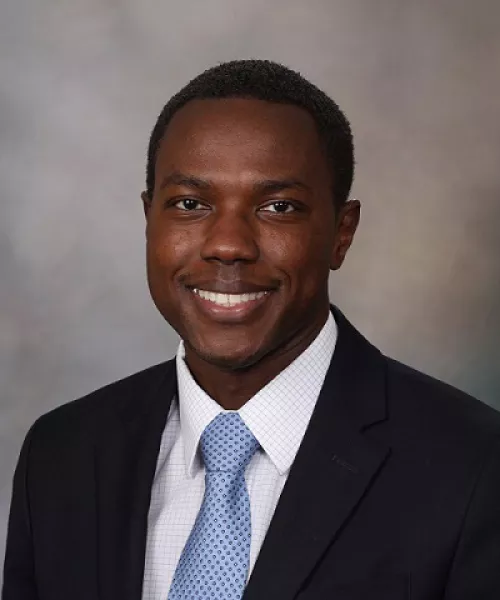Josiah Orina, MD, recently completed a yearlong fellowship in orthopaedic spine surgery at UCSF. Originally from Edmond, Oklahoma, Orina received his medical training at Emory University and then completed his residency in neurosurgery at the Mayo Clinic in Rochester, Minnesota.
Outside the operating room he is actively involved in his church’s outreach program serving San Francisco’s homeless community. Here, he talks about dual perspective, Pandora's Box, and personal fulfillment.
Why did you choose a spine fellowship?
My specialty training is in neurosurgery, and what initially drew me in was the brain, cranial surgery, and microsurgical technique. I was—and still am—fascinated by the brain and understanding its anatomy and function well enough to perform those delicate operations. During my residency at Mayo Clinic, I was also fortunate to receive valuable experience caring for patients with spinal issues of varying complexities including congenital abnormalities, trauma, deformity, degenerative disease, and much more. My interest and passion for spine took off from there, and it’s a privilege to be in a field that allows me to treat both.
What has been the best part of your fellowship at UCSF?
I chose this orthopaedic fellowship because I wanted to add a new perspective to my neurosurgical training. The best part of this fellowship is easily the diversity of patients, spinal pathologies, surgical approaches, and ways of thinking that we encounter. The people I have met here at UCSF have been fantastic, and it has been an honor to work with such a talented group.
What has been one of your most interesting cases?
I met a gentleman in clinic with severe cervical kyphosis in which his neck was so flexed forward that his chin was sitting on his chest. We call this dropped head syndrome, and this had happened gradually over time. He could no longer look upright to maintain forward gaze, he was experiencing substantial neck pain, and he was beginning to have difficulty using his hands from his spinal cord being pinched and irritated. We took him to surgery for realignment of his cervical spine via a combined anterior-posterior neck operation. Being able to hold his head upright again after surgery was a new lease on life for him. He’s one of the happiest and most thankful people I have ever met, which is a continual reminder to me of how fulfilling this profession can be.
What do you see as the most significant challenge in spine surgery?
One of the most significant challenges in spine surgery is adapting to the changes in health care. Our surgeries are coming under increased scrutiny by government and private payers as well as policymakers for a couple of reasons. First, there has been an explosion in the number of spinal operations—particularly fusions—being performed over the last 20 years; and, second, surgery for spinal conditions is expensive. As a result, those of us in this field are being pressed to prove value in the care we are delivering and to be transparent about the outcomes we are achieving relative to the costs of these surgeries. These are fair questions and absolutely the right ones to ask of us, but the introduction of cost considerations into the heart of the physician–patient relationship can be unsettling. I am proud that we are taking the reins in examining these issues because I believe this presents a great opportunity to innovate less expensive ways to deliver quality spine care and ensure that we remain relevant and available for all patients in a healthcare system that prioritizes value.
What’s been the most exciting breakthrough?
The development and use of motion-sparing surgery, such as cervical and lumbar artificial discs and laminoplasties. While spinal fusions performed for the right indications offer enormous benefits to patients, they can also open up a Pandora’s box of long-term complications such as adjacent segment disease and pseudarthrosis by making the spine stiffer. In contrast, artificial discs, laminoplasties, and even simple laminectomies have the advantage of preserving most of the motion in the spine and better approximating normal biomechanical function than do fusions. I think the next leap for spine surgery will be perfecting methods to routinely and effectively treat spinal conditions without fusions, and if we are successful, that will be a landmark achievement.
